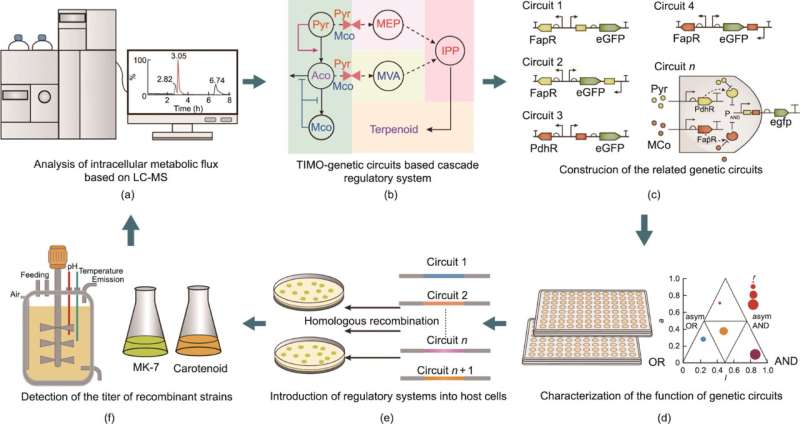This article has been reviewed according to Science X's editorial process and policies. Editors have highlighted the following attributes while ensuring the content's credibility:
fact-checked
proofread
Boosting terpenoid bioproduction via remodeling of isoprene pyrophosphate metabolism

Terpenoids, the largest family of natural products, have gained significant attention for their diverse applications in industries such as pharmaceuticals, fragrances, and biofuels. However, the efficient synthesis of terpenoids using engineered cell factories has been hindered by the limited supply of isoprene pyrophosphate (IPP), the key building block for terpenoid production. Now, a research team led by Jian Chen at Jiangnan University in China has made a discovery that could revolutionize terpenoid bioproduction.
In their research article published in the journal Engineering, Chen and his team unveil a novel approach to address the challenge of insufficient IPP supply. By investigating the metabolic flux distribution in Bacillus subtilis (B. subtilis), the researchers identified an imbalance between central metabolism and IPP production as a major bottleneck. To overcome this hurdle, they devised a strategy to remodel the IPP metabolism using genetically encoded two-input–multi-output (TIMO) circuits.
The TIMO circuits, which respond to pyruvate and malonyl-CoA, were engineered to fine-tune the metabolic flux towards IPP synthesis. This remodeling approach resulted in a remarkable increase in the IPP pool, up to four folds higher than the original levels. To validate the effectiveness of their technique, the researchers applied the TIMO circuits to enhance the production of three valuable terpenoids: menaquinone-7 (MK-7), lycopene, and β-carotene.
The results were astounding. The titer of MK-7, a terpenoid used in the prevention of osteoporosis, arterial calcification, and Parkinson's disease, reached an unprecedented 1549.6 mg/L in a 50 L bioreactor. This achievement represents the highest reported titer of MK-7 to date. Additionally, lycopene production was boosted nine folds, and β-carotene production increased by 0.9 folds.
"This research breakthrough opens up new possibilities for the efficient bioproduction of terpenoids," said Shasha Zhao, the editor of Engineering. "The TIMO genetic circuit-assisted IPP metabolism remodeling framework provides a powerful tool for fine-tuning complex metabolic pathways. It has the potential to revolutionize the production of a wide range of valuable chemicals."
The success of this study not only demonstrates the potential of the TIMO circuits for the production of terpenoids, but also highlights their versatility and robustness. The researchers believe that this regulatory system can be applied to other chassis cells, offering an alternative strategy for remodeling IPP metabolism.
The implications of this research extend beyond terpenoid production. The multi-signal, coordinated, and cascaded dynamic regulation strategies employed in this study lay the foundation for the rational and global fine-tuning of complex metabolic pathways. This breakthrough could pave the way for the production of various other chemicals, driving advancements in multiple industries.
As the world continues to seek sustainable and eco-friendly alternatives to traditional chemical synthesis, this research presents a promising avenue for the development of bioproduction processes that are both economically viable and environmentally friendly.
More information: Xianhao Xu et al, Remodeling Isoprene Pyrophosphate Metabolism for Promoting Terpenoids Bioproduction, Engineering (2023). DOI: 10.1016/j.eng.2023.03.019
Provided by Engineering




















